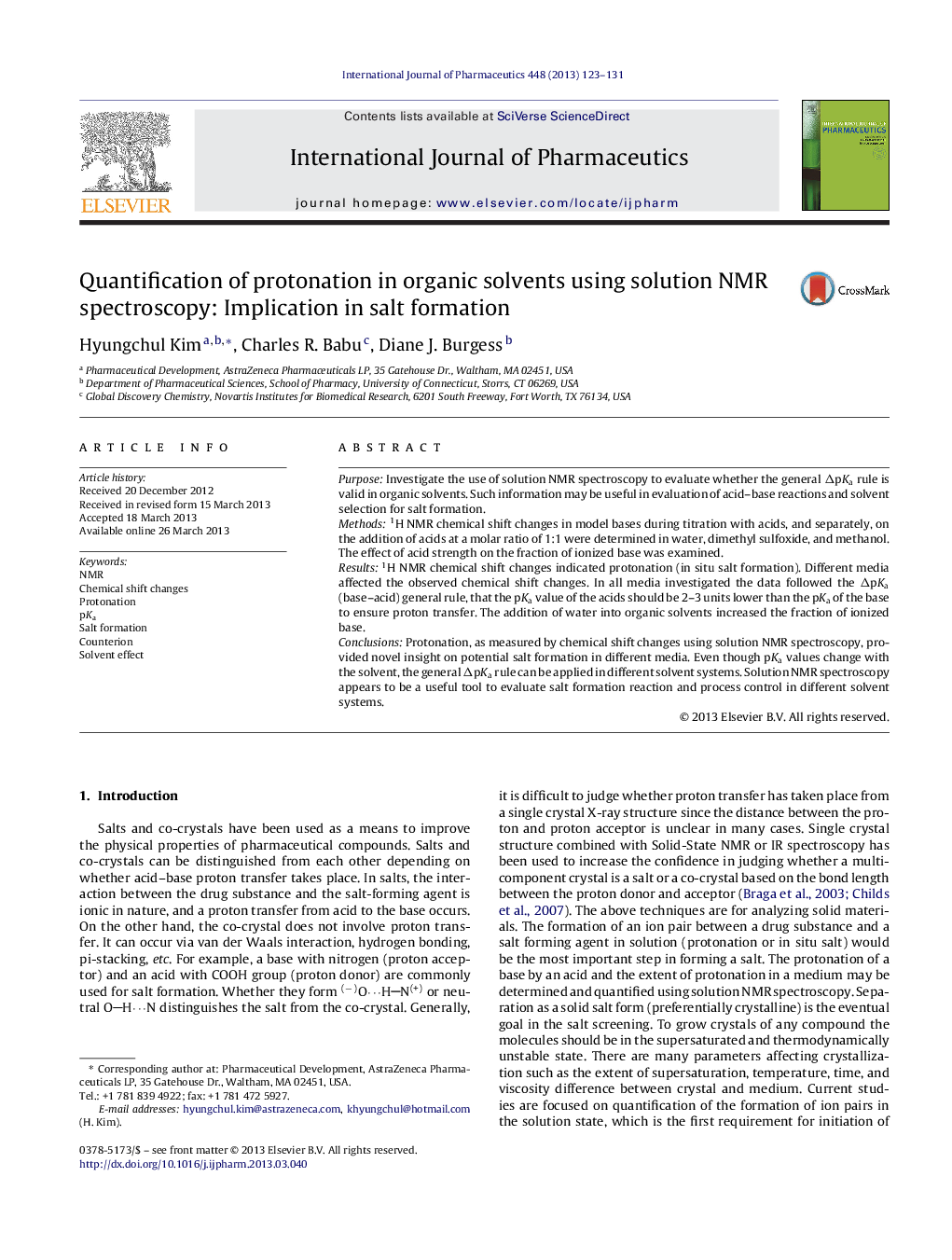| Article ID | Journal | Published Year | Pages | File Type |
|---|---|---|---|---|
| 2502530 | International Journal of Pharmaceutics | 2013 | 9 Pages |
PurposeInvestigate the use of solution NMR spectroscopy to evaluate whether the general ΔpKa rule is valid in organic solvents. Such information may be useful in evaluation of acid–base reactions and solvent selection for salt formation.Methods1H NMR chemical shift changes in model bases during titration with acids, and separately, on the addition of acids at a molar ratio of 1:1 were determined in water, dimethyl sulfoxide, and methanol. The effect of acid strength on the fraction of ionized base was examined.Results1H NMR chemical shift changes indicated protonation (in situ salt formation). Different media affected the observed chemical shift changes. In all media investigated the data followed the ΔpKa (base–acid) general rule, that the pKa value of the acids should be 2–3 units lower than the pKa of the base to ensure proton transfer. The addition of water into organic solvents increased the fraction of ionized base.ConclusionsProtonation, as measured by chemical shift changes using solution NMR spectroscopy, provided novel insight on potential salt formation in different media. Even though pKa values change with the solvent, the general ΔpKa rule can be applied in different solvent systems. Solution NMR spectroscopy appears to be a useful tool to evaluate salt formation reaction and process control in different solvent systems.
Graphical abstractFigure optionsDownload full-size imageDownload high-quality image (139 K)Download as PowerPoint slide
